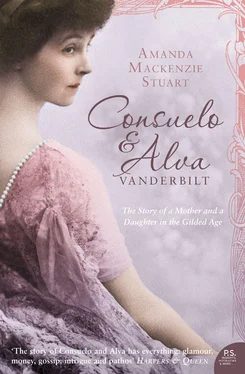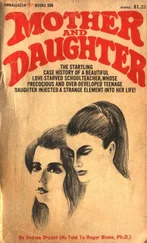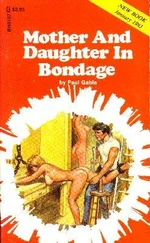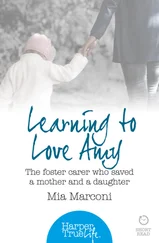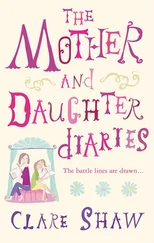Consequently, Consuelo bore the brunt of Alva’s educational experiments and maternal philosophy. Alva insisted on proficiency in foreign languages, an accomplishment that was also encouraged by William K. ‘At the age of eight I could read and write in French, German and English. I learned them in that order, for we spoke French with our parents, my father having been partly educated in Geneva,’ 58 wrote Consuelo. She was made to recite long poems in French and German to her parents every Saturday so that by the time she was ten she was capable of reciting ‘Les Adieux de Marie Stuart’ at a solfège class concert with such emotion that she burst into tears and was thrown a bouquet.
While instruction was given by tutors and governesses, Alva kept a very close eye on her curriculum, saying that she ‘knew the books from which [Consuelo] was being mentally fed as I knew the food that nourished her body.’ 59 Alva later told the New City Journal that Consuelo often had three governesses at any one time, but ‘it was a great nuisance to have them around’. 60 At the same time, Consuelo’s education as a linguist did represent genuine encouragement of individual talent, though it was along strictly approved lines. She showed an early talent for languages and everything was done to promote it; and when she occasionally did something well enough to please Alva, the praise was worth having.
Physical independence was also encouraged. At Idle Hour, no-one could have been less like a conventional nineteenth-century mother than Alva. The children crabbed, fished and experienced a taste of the autonomy Alva enjoyed as a child, though even here she could not resist instruction. She had a pond specially constructed so that they could learn to sail and she could dispense geography lessons:
As the knowledge of navigation increased a mast and sail were added. The row boat, like a caterpillar, put on wings and became a butterfly of the water, a sail boat. With this craft and the pond we developed the Geography of the whole world. Now we were going from Dover to Calais on the choppy Channel. Now we were coming from New York to Liverpool on the perilous Ocean. William, the elder boy, by continuous exertion rocked the boat so successfully that we believed in storms and what they could accomplish for we were all pitched into the pond … no young friend who ever visited us met me at the luncheon table attired in her or his clothes. 61
A governess was also pitched into this pond by the children, who promptly received one of Alva’s more memorable thrashings. In spite of her impulse to control every aspect of her children’s lives, Alva could be great fun, and courageous if things went wrong. At least once she prevented a serious accident when she jumped up and seized the bridle of a galloping pony as it bolted with Consuelo towards a water hydrant.
In a household where the children were waited on hand and foot, Alva thought it necessary to provide a play house where they could acquire some self-reliance. It was called ‘La Récréation’ and was one aspect of childhood which Alva and Consuelo later agreed had been a success. ‘The German governess and my daughter made preserves there and did a great deal of cookery. In fact, they superintended the cooking while my eldest son was the carpenter and waiter. I and my friends often went there for afternoon tea. It was prepared and served by the children and was most excellent,’ 62 wrote Alva. These hours in La Récréation gave Consuelo an early taste of the pleasure of running houses where she was in control. ‘This playhouse was an old bowling alley, and when my mother handed it over to us she insisted as a matter of training that we should do all the housework ourselves,’ wrote Consuelo. ‘Utterly happy, we would cook our meal, wash the dishes and then stroll home by the river in the cool of the evening.’ 63
The children were also given a garden where they grew flowers and vegetables which they were encouraged to take to the nearby Trinity Seaside Home for convalescent children, Alva’s first philanthropic undertaking. She told Mary Young that she started the home after watching her delicate eldest son grow into a robust boy and grasped the extent to which wealth had assisted his recovery from precarious health in infancy. Realising that poor mothers lost children because they could not afford the necessary care, Alva purchased land and built a home where convalescing children from poor homes were looked after by Protestant sisters. This was also Consuelo’s first exposure to the lives of those less fortunate than herself.
Consuelo’s nurse ‘as near a saint as it is possible for a human being to be’, 64 was another person responsible for drawing back the curtain a little further so that one of the most protected little girls in America had a glimpse of how other people lived. In conversation with a workman from Bohemia responsible for cutting the grass at Idle Hour, Consuelo discovered that he had a crippled child. Encouraged by her nurse, she loaded up her pony-cart with presents and went over to see the child, an experience which forced her to realise for the first time ‘the inequalities of human destinies with a vividness that never left me’. 65 At other times, the children sold the vegetables they grew at La Récréation to their mother in an exercise in elementary capitalism: ‘I know that they have grown up to profit by these lessons,’ 66 wrote Alva. In one respect she was right. Behind her back her children gave themselves elementary lessons in gambling. ‘My brother Willie, who was of an impatient nature, would pull up the potatoes long before they were ripe,’ wrote Consuelo. ‘Our earliest bets were made on the number we would find on each root.’ 67
In 1885 Consuelo’s grandfather, William Henry Vanderbilt, collapsed mid-conversation with an old competitor at 640 Fifth Avenue, and died. He was sixty-four. It is difficult not to feel sorry for William Henry. In addition to vilification as a result of ‘The public be damned!’ incident, he only lived to enjoy eight years of liberation from his father (or six, if one deducts the years spent attempting to settle the Commodore’s will). In the short time available he made up for years of repression. He flung down a challenge to Mrs Astor on his own account as one of the founders of the new Metropolitan Opera Company, set up by a group excluded from the Academy of Music because they were born too late to acquire a box; and he indulged a passion for horseflesh which he inherited from his father. He particularly loved trotting horses, and was often seen driving his famous trotting teams up and down Fifth Avenue. His favourites, Maud S and Aldine, broke the record for a mile at the track at Fleetwood Park in 1883. His stables for the ‘trotters’ were renowned for having gas lamps with porcelain shades, and sporting pictures on the walls.
When his new house at 640 Fifth Avenue was completed, it was clear that William Henry had finally lost all inhibition when it came to shopping. It was stuffed with enormous pieces of Renaissance furniture (in line with proto-Medici thinking), suits of armour, marble statues, bronzes, mirrors, tapestries and oriental rugs. His front doors were an exact copy of the Ghiberti bronze doors in Florence. There were Japanese rooms, early-English rooms, Grecian rooms. The walls were hung with paintings by Alma-Tadema, by Fortuny, Millet, Munkacsy, Bonheur and Bouguereau, and his great favourite, Meissonier. Those who regarded this favourably saw it as ‘regal magnificence’. Edith Wharton, on the other hand, described such Vanderbilt excess as ‘a Thermopylae of bad taste’. 68 Amidst it all, William Henry is said not to have seemed entirely at ease, boxing himself into one corner of his library in his old rocking-chair.
In William Henry’s hands the Vanderbilt fortune had continued to grow and multiply. Though assisted ably by Cornelius II and William K., as well as the Vanderbilt man of affairs Chauncey Depew, he found it hard to delegate and therefore much of the credit for this must go to him. He shepherded the railroads through a difficult period of unregulated competition, appalling accidents, organised protest at exploitative and abusive freight rates, and serious labour unrest (much of it justified). He improved Vanderbilt trains and managed to keep the Vanderbilt workforce largely on side during a violent railroad strike in 1877. As Alva put it: ‘He lacked the commanding qualities of the Commodore who had founded the family fortune, but he had a quality of genuine kindness – almost an extreme kindness and a dogged persistence and thoroughness which father had either instilled or encouraged in him and which made [it] possible for him to handle the great Rail road business left in his care.’ 69
Читать дальше
